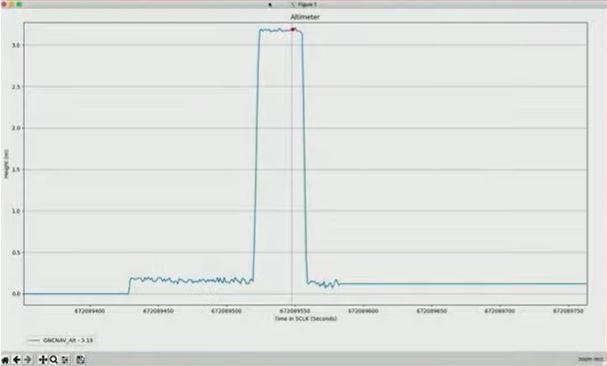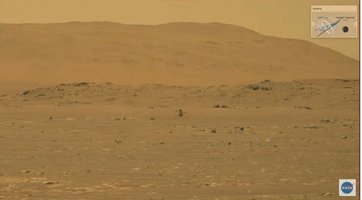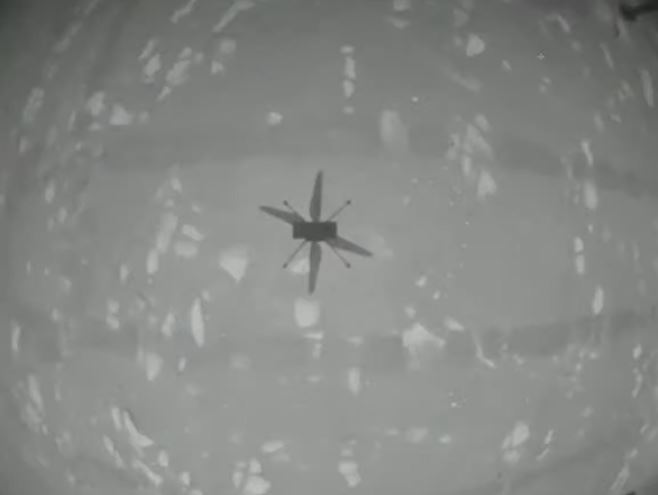“We have altimeter data!” were the words that compelled a standing ovation from everyone in the NASA-JPL center this morning, and for good reason. They served as the unofficial annoucement that the Mars rover Perseverance had successfully transmitted data from the Ingenuity craft’s first flight.

Ingenuity had confirmed, through telemetry data, including altimeter readings, that it had flown in the thin atmosphere of Mars. It was a simple, short jump but it marked a new era in the history of flight. We can now say that we have flown on another planet.
Ingenuity climbed to just over three meters (10 ft) and hovered for just a few seconds, but it was enough to photograph its own shadow to capture an interplanetary selfie. This position also allowed it to be photographed from Perseverance.

The flight was originally scheduled for Monday 11th, but the last test of the rotors spinning at full speed, 2,400 RPM, showed there was an issue with the transition mode from static to flight mode. That caused a postponement for the first flight to give NASA/JPL engineers time to assess the problem.
Eventually, the engineers found the problem and decided to correct it with a simple software upgrade. This upgrade allowed the Martian drone to transition smoothly from full RPM on the ground to full RPM in flight. The new schedule called for a test flight on Monday April 19 at around 7:00 am EDT.
The historic nature of this mission compelled NASA to include within Ingenuity a tiny swatch of fabric from the wing of the legendary Wright Flyer 1. In doing so, Ingenuity is directly connected to the Wright Brother’s plane that in December 1903 made the first powered flights on Earth. That small piece of fabric made the first flight on Earth and now the first flight on Mars.
Exciting as it is, this first flight was just a test of all systems and the theory that flight could be possible to attain with the thin atmosphere of Mars. Over the next few weeks, more complicated missions are planned that could provide scientists with a whole different understanding of aeronautics.
Also important is how Ingenuity is just the first step in a brand new branch of space exploration that will be defined as aerial support and could include drone technology in a big way. From now on, many missions will have drones that will help reach areas that are impossible for ground vehicles to access. Someday, these types of drones will assist human explorers and allow them to see beyond the horizon and survey sections that are deemed too dangerous or too remote for humans to go.
While we've already taken one giant leap for drone kind, this news underscores how much more there is to define for the technology that will allow humans to use machines that remotely and autonomously explore their surroundings. Doing so will create lessons that can be utilized on Earth, on Mars, and beyond.
Click here to see video captured by Perseverance of Ingenuity in flight.















Comments